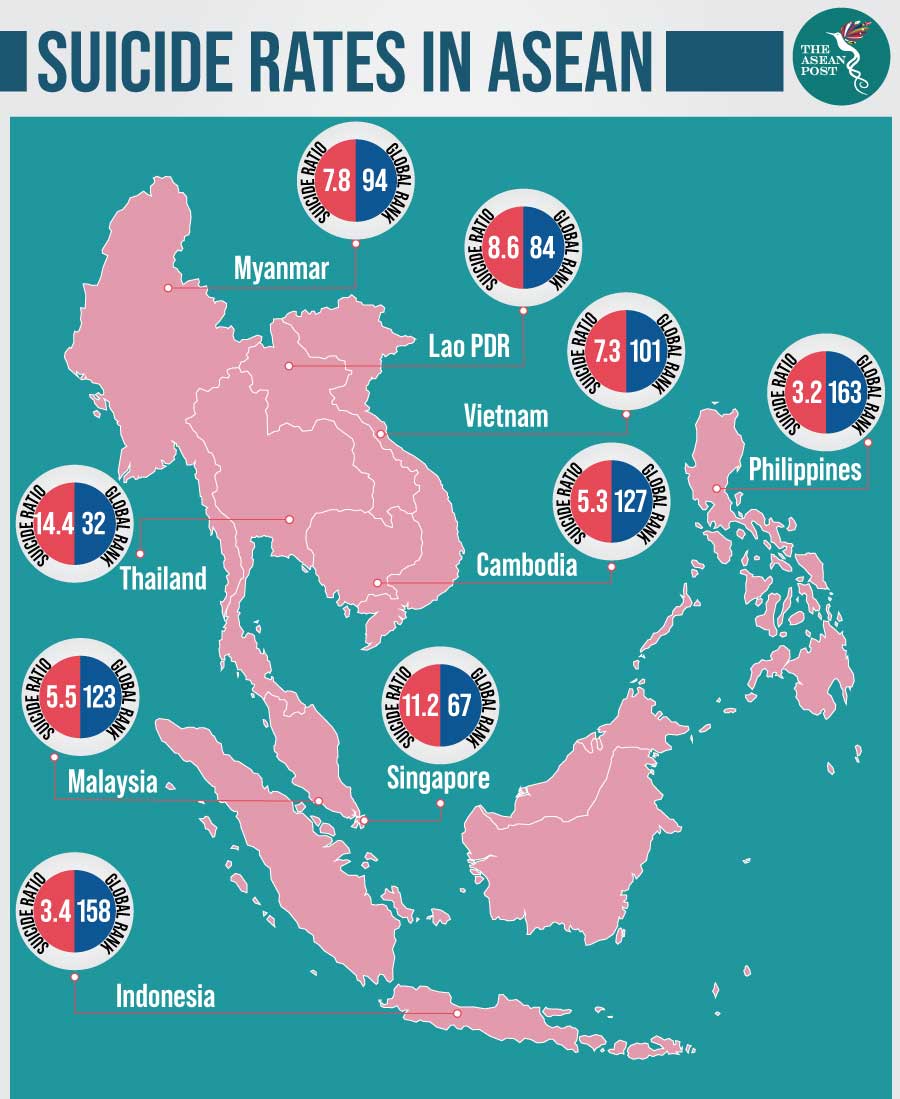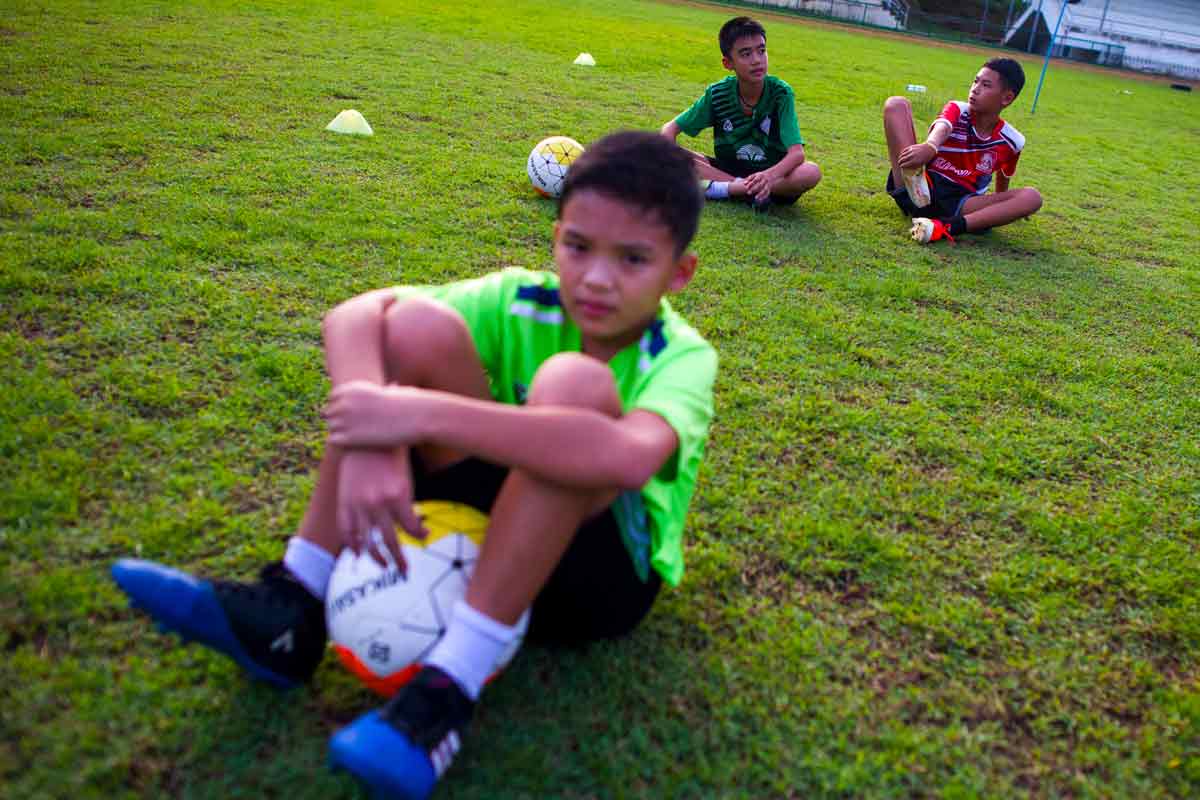Recently, on 13 September, The ASEAN Post (TAP) published an article regarding suicide rates in Thailand. In that article, it was noted that Thailand had the highest suicide rates in ASEAN, according to a recent study conducted by the World Health Organization (WHO). The WHO ranked Thailand 32nd worldwide in its annual suicide rate report, with a 14.4-suicide ratio for every 100,000 population, or equivalent to 10,000 deaths by suicide per year, much higher than other ASEAN countries.
The article also quoted Somrak Chuwanichawong from Bangkok’s Srithanya Hospital who, in 2016, presented her research on depression, suicide and public health in Thailand. She noted that the increased number of suicides in recent years could be attributed to personal depression. Speaking to local media, Somrak said that depression can have many causes, but when combined with mental imbalances, can lead to suicide when left untreated.
But if depression is one of the main contributors to the high suicide rates in Thailand, then it is also important to look at who exactly may be vulnerable to depression in the country. One such group just happens to be the youth.
In December 2017, Thailand’s Department of Mental Health (DMH) then director general Boonruang Trairuangworawat was quoted as saying that an estimated one million teenagers suffer clinical depression, many of whom are going untreated. On top of that, while the estimated one million teenagers are believed to suffer from depression, Boonraung added that two million more are at risk, making an upward of three million among a population of eight million teens then.
More recently, in June, current DMH director general Kiattibhoom Vongrachit told local media that the country’s young people now have an increased risk of depression and suicide. In the first six months of this year, 40,635 calls were made to DMH’s hotline; 13,658 of the calls were from children and young people aged between 11 and 25 years old. This was compared to 70,543 calls made to the hotline in the whole of 2018. 10,928 were from the 11 to 19 age group and 14,173 from the 20 to 25 age group.
DMH said that stress and anxiety may affect a student’s ability to concentrate and perform well at school, and they may show several warning signs, such as lack of attention, loss of interest in daily activities, lethargy, sadness, and sleeping issues.

Social media
According to a report from Google and Temasek towards the end of last year, the Southeast Asian region is poised to reach 480 million internet users by 2020, with smartphones users making up roughly 90 percent of this number.
But more than this, the report also found that on average, consumers in Southeast Asia spend 3.6 hours per day on mobile internet. Thais though spend 4.2 hours per day on mobile internet. For context, consumers in the United States (US) spend an average of just two hours per day on mobile internet.
Statistics from We Are Social’s 2018 report also show that Thailand’s social media penetration is strong. According to the report, out of a population of 69.1 million, 57 million are internet users, 51 million are active social media users, 55.6 million are unique mobile users, and 46 million are active mobile social media users.
Thailand’s social media penetration is important to note because according to adviser to the country’s public health minister Somchai Chakkraband, becoming hooked on social media for many hours each day heightens the risk of depression. He was quoted while speaking at an international symposium titled “Mental Health in a Changing World: The New Challenges” at Bangkok, last July.
Also present at the symposium was Kiatiphum who said that more than 800,000 people had called the DMH with many parents saying they have trouble communicating with children addicted to social media.
“Youngsters who spend a lot of time on the internet tend to perform poorly at school, resulting in them being reprimanded by their parents, which builds stress,” he added.
Clinical psychologist at the Child Mind Institute, Alexandra Hamlet, has also noted that a rise in depression could be evidence that the connections social media users form electronically are less emotionally satisfying, leaving them feeling socially isolated.
“The less you are connected with human beings in a deep, empathic way, the less you’re really getting the benefits of a social interaction. The more superficial it is, the less likely it’s going to cause you to feel connected, which is something we all need,” she said.
Experts agree that social media could cause depression and it goes without saying that, in this case, the youth are most susceptible to such a side effect. As far as social media is concerned, the community will have to shoulder most of the responsibility to ensure that the youth are not too hooked. Meanwhile, the taboo associated with seeking mental help in Thailand (as mentioned in the previous article) must also be challenged.
On 10 September, the WHO, in collaboration with global partners, launched a “40 seconds of action” campaign, which will culminate on World Mental Health Day on 10 October. This year’s theme is suicide prevention.
The “40 seconds of action” campaign gives an opportunity for people to help improve awareness of the significance of suicide as a global public health problem; improve knowledge of what can be done to prevent suicide; reduce the stigma associated with suicide; and let people who are struggling know that they are not alone.
The WHO has also urged people to share their messages, photos, illustrations and videos that are not of a private nature on Twitter or Instagram using the hashtag #40seconds and #WorldMentalHealthDay.
Related articles:
